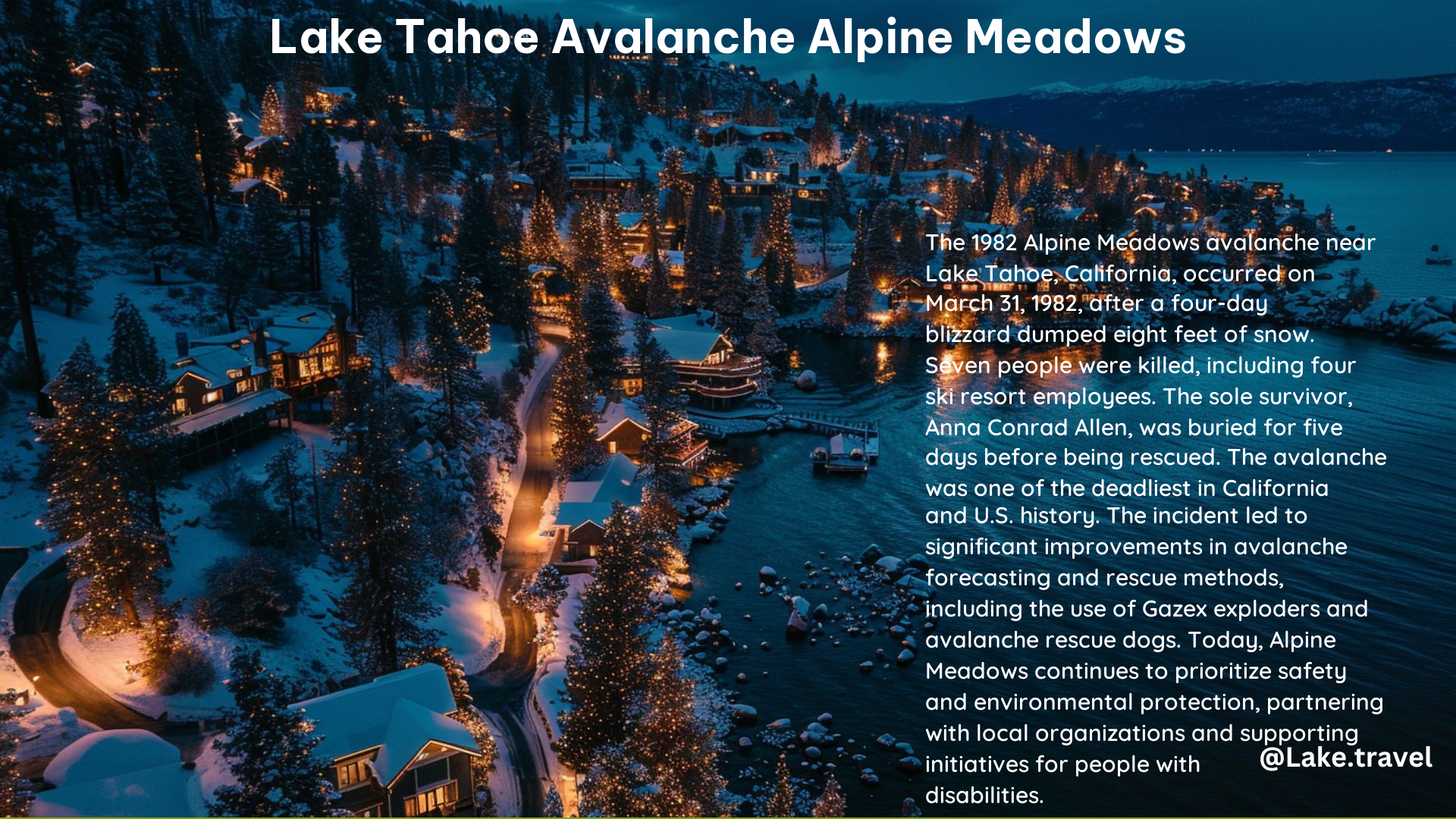On March 31, 1982, a devastating avalanche struck the Alpine Meadows ski resort near Lake Tahoe, California, claiming the lives of seven people and leaving a lasting impact on the community. This tragic event has become a pivotal moment in the history of avalanche safety and rescue efforts in the region.
The Fateful Day
The avalanche occurred at 3:45 PM on March 31, 1982, after a four-day late-season storm had dumped seven-and-a-half feet of snow and brought 100-mile-per-hour winds to the ridgetops. This created an extreme avalanche danger that ultimately led to the disaster.
The massive avalanche crashed into the base area of the resort, destroying a building and burying the parking lot. Seven people were killed, including four Alpine Meadows employees and three others who were walking in the parking lot.
Survivor’s Story

One remarkable survivor of the 1982 avalanche was Anna Conrad Allen, a 22-year-old ski lift operator. She was buried for five days before being rescued, suffering from hypothermia, severe frostbite, and dehydration. As a result, she lost part of her right leg and left foot.
Safety Measures and Lessons Learned
The 1982 Alpine Meadows avalanche tragedy highlighted several important lessons that have since been implemented to improve safety and rescue efforts in the region:
Avalanche Forecasting
The incident emphasized the importance of meticulous record-keeping and better forecasting of avalanche conditions. This has led to improved management of avalanche danger through the use of artillery and the addition of Gazex exploders to reduce the need for hand charges.
Rescue Efforts
The 1982 avalanche also stressed the critical role of rescue dogs in locating survivors. The Alpine Avalanche Rescue Dogs are now onsite and ready to respond quickly in the event of an avalanche or missing skier.
Personal Responsibility
The incident underscored the importance of personal responsibility in understanding and respecting avalanche risks. Skiers and riders must be aware of the signs of potential danger, especially during big storm cycles, and take fewer risks on hazardous days.
PTSD and Mental Health
The documentary “Buried” also focuses on the long-term effects of PTSD on the people involved, particularly the rescuers, and the need for post-incident therapy sessions.
Current Safety Measures at Alpine Meadows
Today, Alpine Meadows is in the “Class A” designation for avalanche risk by the US Forest Service, indicating a high frequency of avalanches of a dangerous size. The resort uses artillery and Gazex exploders to manage avalanche danger, and patrollers are trained to respond quickly to potential threats. The Alpine Avalanche Rescue Dogs are also onsite and ready to assist in the event of an emergency.
The 1982 avalanche tragedy at Alpine Meadows near Lake Tahoe was a devastating event that has had a lasting impact on the ski resort and the surrounding community. However, the lessons learned from this tragedy have led to significant improvements in avalanche forecasting, rescue efforts, and personal responsibility, making the sport of skiing and snowboarding safer for all who enjoy the slopes.
